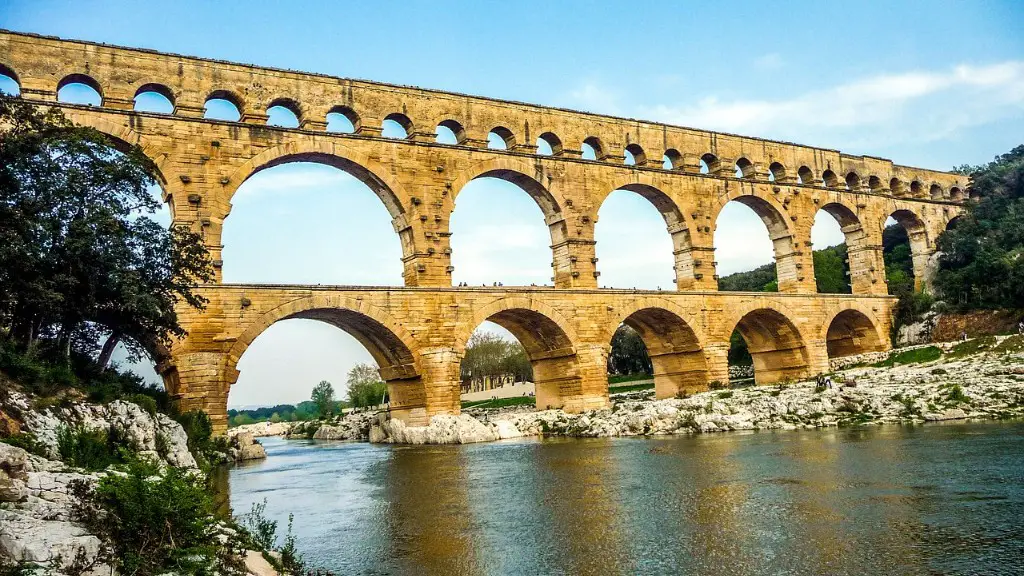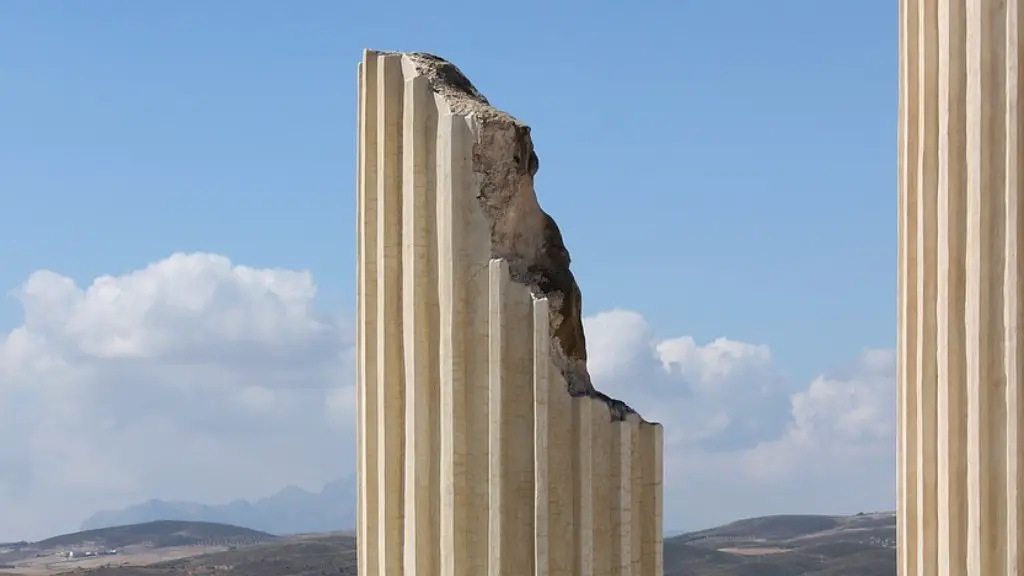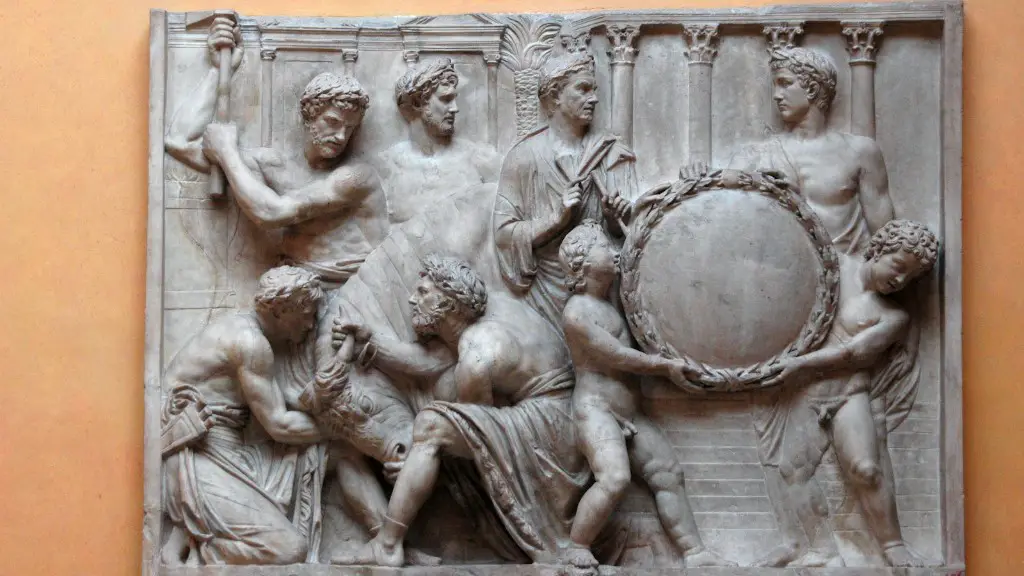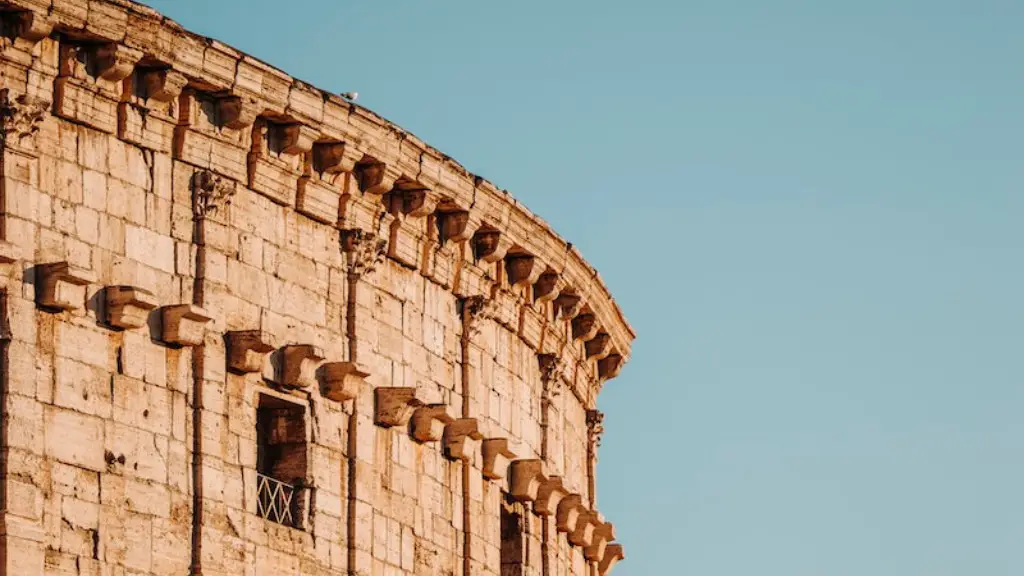Ancient Rome stands as a monument to some of the most powerful and influential empires of the ancient world. Not only did the city-state directly rule over nearly all of Italy, it was also home to many of the major gods of antiquity. One of the defining characteristics of Ancient Rome was the all-important daily life of its citizens. To understand this, we must explore a wide range of topics such as the food, religious practices, leisure activities, and typical jobs.
Since Rome was a major port city, seafood was a major staple of its citizens’ diet. Herring, mullet, and bass were all par for the course. Additionally, shoppers could find eggs, dairy products, vegetables, and meat at the markets. Fruits, nuts, and wheat also factored heavily into the diet. Beer and wine were also sometimes consumed to wet palates. Interestingly, Ancient Romans used large quantities of olive oil to both season their food and for personal hygiene.
The religious practices of Ancient Rome were majorly influenced by Roman mythology. The followers of their respective gods were expected to offer sacrifices, prayers, and festivals throughout the year. Religion was also seen as a type of superstition, as Ancient Romans looked to soothsayers and fortune tellers to predict the future or explain away events.
Although Ancient Rome was an incredibly militaristic society, citizens still found time for leisure activities during their free time. Sports competitions were common and popular, especially wrestling and chariot racing. Art was a flourishing pastime, as Romans often created statues, coins, and even paintings in honor of their gods and heroes. Music, too, was seen as a celebratory art form – plays, operas, ballets, and other events served to entertain the citizens.
The jobs of an average citizen in Ancient Rome depended heavily on their place in the social hierarchy. Manual laborers typically worked in factories or as merchants, while professionals such as lawyers, doctors, or teachers were typically well-to-do citizens. Additionally, Ancient Roman rulers placed a great emphasis on public service, and many citizens were expected to serve in some form of government or military position.
Economy
The economy of Ancient Rome was incredibly diverse, with a number of different markets and services available to citizens. For example, Rome was one of the first cities to develop a complex banking system and currency. Additionally, the city was a major center for trade and commerce, as goods from all across the empire were brought in and out of the city. Over time, this functioned as one of the main sources of income for Rome and its citizens.
In order to finance the numerous projects and civic works of the Roman Empire, taxes were collected from both citizens and foreigners. These taxes enabled the Roman government to build roads, aqueducts, and other public works. Additionally, the government often subsidized major projects, provided discounts for certain goods, and award contracts to the highest bidder.
In addition to the taxes, Ancient Rome had a robust slave market and labor force. Slaves were vital to the functioning of the Roman economy, as they typically served as manual laborers or servants in wealthy households. This population of disposable labor also freed Roman citizens from a lot of the daily chores and enabled them to focus on more lucrative professions.
Education
The educational system in Ancient Rome was renowned even during antiquity, as wealthy families typically attended private schools. Here, children learned rhetoric, philosophy, and writing. With time, some students even went on to pursue higher degrees at universities. Additionally, many students who did not attend private schools were often tutored in Roman and Greek literature by state-approved teachers.
Although the education system in Ancient Rome was highly valued, there was still a marked lack of emphasis placed on teaching science, technology, and mathematics. Instead, the focus was on the foundational skills that were thought to be essential for a career in politics or law. Regardless, Ancient Rome still stands as an example of a well-developed educational system that served as the inspiration for schools throughout the ancient world.
Moreover, Ancient Rome was heavily invested in the importance of literature and literature-based history. Many citizens enjoyed reading popular works such as The Aeneid, The Odyssey, and Caesar’s Commentaries on the Gallic War. Furthermore, many poets, playwrights, and authors created works that are now considered to be some of the most iconic pieces of literature in history.
Daily Life
Despite the obvious differences between Ancient Rome and modern-day life, many aspects of Roman daily life are still commonplace today. For example, the typical Roman dinner was similar to what is now referred to as a traditional Italian dinner, as diners typically gathered around the table for an evening meal. Additionally, many of the same holidays are celebrated today, such as Saturnalia for Christmas and Floralia for Easter.
A huge part of Ancient Roman daily life was the idea of being a good neighbor. This was essential to the social life of the citizens and was even a part of the law. Roman citizens were expected to treat each other with respect and to be helpful to their neighbors in times of need. This sense of community was what enabled Ancient Rome to become one of the most significant empires in history.
The everyday existence of Ancient Rome’s citizens was also heavily influenced by laws and regulations. Citizens were expected to obey the law and face the consequences if they did not. Ancient Roman courts were responsible for making sure individuals followed the law and made sure that citizens were held accountable for their wrongdoings.
Government
The government of Ancient Rome was an elaborate system that featured three branches. The Senate was the upper house, while the Assembly was the lower house. Additionally, a powerful executive branch was led by a series of consuls, or powerful leaders that presided over the daily affairs of the city-state.
The Senate was made up of aristocrats, men of wealth, and other powerful citizens. These senators were responsible for passing laws, overseeing the administration of the state, and providing advice and guidance to the executive branch. The Assembly, on the other hand, was composed of citizens from all walks of life. This legislative body was tasked with debating laws, making new laws, and providing the executive branch with guidance.
The executive branch was headed by the two consuls, who were elected by the citizens of Rome. These consuls had immense power, as they were responsible for enforcing the laws of the state, leading the military, and making sure that the Senate and Assembly obeyed their decisions.
Social Status
The social status of different individuals in Ancient Rome was heavily influenced by their place in the social hierarchy. Generally speaking, higher status individuals such as aristocrats, military officers, and government officials were afforded a great deal of privilege and prestige. Lower status individuals such as slaves and manual laborers, meanwhile, had very little in terms of rights and privileges.
Additionally, an individual’s wealth played a major role in social standing. Wealthier citizens were able to acquire larger homes, better education, and even access to certain events or gatherings. In contrast, poorer citizens were limited to manual labor jobs, and faced significant restrictions in terms of their access to resources.
Societal Customs
Ancient Rome was heavily influenced by a host of different societal customs and traditions. In terms of dress, a typical woman would don a long, pleated tunic, a fitted blouse, and a cape or cloak. Men were usually seen wearing a long-sleeved toga, a tunic, or pants.
In terms of entertainment, Ancient Roman citizens enjoyed a variety of events such as chariot races or gladiator fights. Theater plays were also popular, as were visiting temples or attending the local marketplaces.
The Ancient Roman language was mainly Latin or Latin derivatives. However, other foreign languages were also common including Greek, Iberian, and Punic.




